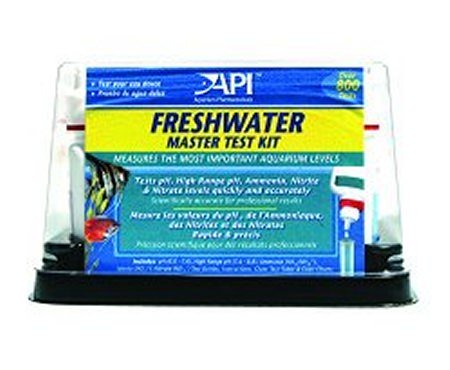| Back to Back Issues Page |
 |
|
The Goldfish Gazette, Issue #057 -- Maintenance Schedules September 30, 2018 |
Goldfish Care TipsA Free Monthly Resource For Goldfish Enthusiasts In This Issue
Establishing a maintenance schedule appropriate for your Goldfish setup will ensure your fish remain healthy, and maintenance takes the least amount of time. Maintenance Schedules I often read about enthusiasts making a partial water change every day/week/month as part of their routine maintenance, but there is never any evidence given that the size and frequency are correct for their particular setup. What are the water parameters that trigger a partial water change? It could be for example, the pH drops to 6.80 and nitrates are 50 ppm after a week. Doing partial water changes based on something read on the Internet, or what a local pet shop has advised may be completely inappropriate for your setup How to Work Out a Maintenance ScheduleMaintenance usually revolves around water changes, as the water change is usually the biggest and most important part of regular maintenance.What makes a water change necessary is when the water has a build-up of nitrates above the ideal level, which is less than 50 ppm, and/or the pH has dropped below 7.0. I am assuming here that a filter of the correct size has been installed as maintaining the right water conditions for Goldfish without one is very difficult and time consuming. With a properly cycled filter, nitrates build up in the water as part of the nitrogen cycle, and the pH drops. The water may look perfectly clean and clear, but without large amounts of water plants to complete the cycle and absorb the nitrates, the water will need to be changed. To work out how often the water in your aquarium needs changing starts with testing your source water. Most city water is around 7.0 pH with low nitrate levels. If yours isn’t you may have to add chemicals to alter the pH value. Nitrate levels aren’t usually a problem whatever the water source unless it is polluted. Now you know your starting water parameters, you need to have a fully cycled filter with an aquarium full of fresh clean water and stocked with the maximum number of fish you plan to keep. After a day or two you need to start testing the water daily, or at least every other day and note when the water degrades to the point when it needs changing because either the nitrates have reached 50 ppm, or the pH is below 7.0. This is the number of days before your aquarium needs at least a water change when starting with perfectly fresh clean water. Hopefully the time frame is a reasonable time. If the water degrades say within a week, your aquarium eco-system is seriously over-stressed, and you need to make changes...quickly. What affects the Speed of Water Pollution?Many factors affect how quickly your aquarium water will degrade. Examples are:• Fish numbers – Goldfish are large fish that produce a lot of waste. More fish, more waste • Filter size – an undersized filter quickly clogs and loses its efficiency • Feeding – if you are feeding heavily to promote growth, the greater amount of waste produced needs to be allowed for • Food type – protein rich foods pollute water quickly • Plants – the more live plants, the slower nitrates build up Water ChangesHaving established the time frame before your perfectly clean aquarium needs at least a water change, you now need to establish the time frame that will depend on the size of the water changes you plan to make.Many enthusiasts make partial water changes. The problem with partial water changes is that the water left is still polluted. A half water change halves the level of pollution, but the time it takes to re-pollute the water back to the level it requires changing is half the time it took from clean. The point I am making is partial water changes need to be large, otherwise you will be making frequent water changes. You will have to re-test after making your first few water changes to establish what your true water change frequency is when starting with a less than perfectly clean filter and aquarium. Over time your fish will grow, so you need to periodically re-test to check that your water changes are large and frequent enough. Other Maintenance JobsApart from a water change, aquarium maintenance also includes cleaning the glass sides of algae, cleaning the substrate (gravel, sand), trimming or replacing plants and cleaning the filter.All of these jobs can be made easier or required less frequently by good planning. The aquarium should be positioned away from direct light or even strong indirect light to minimize algae growth. Many enthusiast leave their aquarium bottoms bare to save cleaning the substrate. Plants can be planted in pots that can be easily removed for trimming or replacement. The filter shouldn’t need cleaning at every scheduled maintenance. Go as big as practicable to have some extra capacity for when your fish grow and aim for a complete strip down at every third or fourth water change. SummaryThe key to establishing the correct maintenance schedule frequency is water testing, otherwise you could be either not changing enough water or wasting your time changing it too often.To learn more about setting up an aquarium to minimize maintenance click here... Comments? Ideas? Feedback? I'd love to hear from you. Just reply to this e-zine and tell me what you think, or what topics you want covered. Next Month's Topic Medicinal Dipswww.facebook.com/aboutgoldfish |
| Back to Back Issues Page |